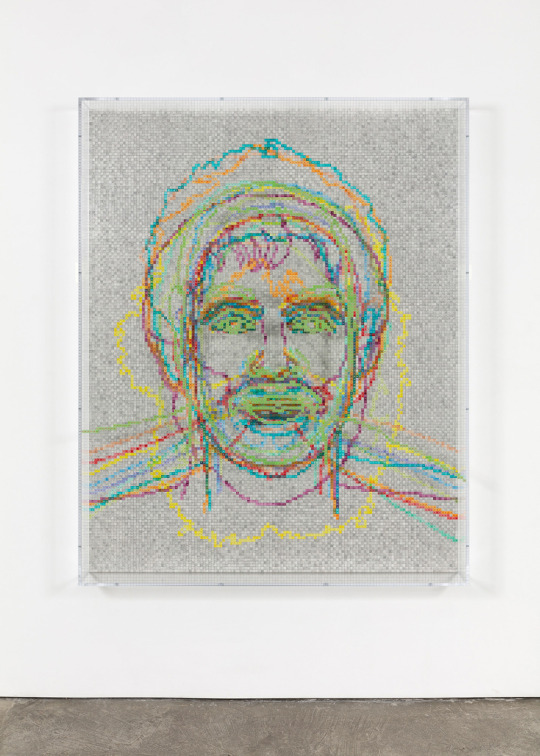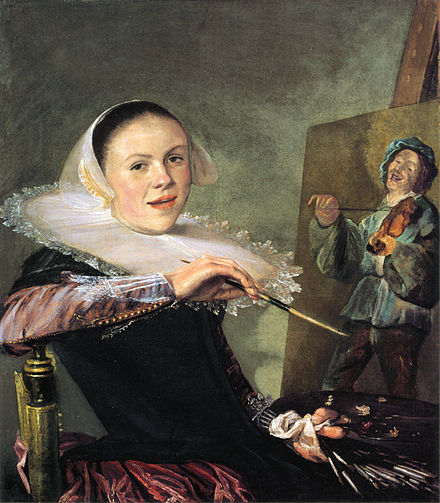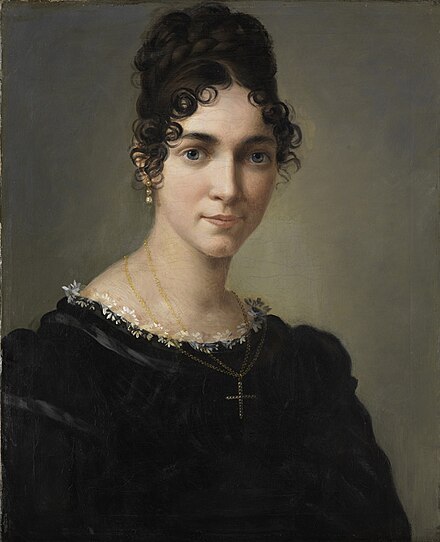#molefi kete asante
Text

Charles Gaines, Faces 1: Identity Politics, #11, Molefi Kete Asante, (acrylic sheet, acrylic paint, lacquer, wood), 2018 [Paula Cooper Gallery, New York, NY. © Charles Gaines]


Exhibition: Charles Gaines, Paula Cooper Gallery, New York, NY, May 3 – June 23, 2018
#art#mixed media#visual writing#drawing#pattern#exhibition#charles gaines#molefi kete asante#paula cooper gallery#2010s
31 notes
·
View notes
Text

13 notes
·
View notes
Link
Dr. Molefi Kete Asante, coined the term ‘Afrocentricity’ and is the author of 100 books dealing with African and African American History. He discusses with Michael Imhotep host of ‘The African History Network Show’, the controversy over the depiction of a melanated Queen Cleopatra VII. The documentary is part of the ‘African Queens’ series from Executive Producer Jada Pinkett Smith. It premiered on May 10th, 2023 on Netflix. REGISTER NOW: Did you miss Class Sat. 5-20-23, 2pm EST, ‘Ancient Kemet, Moors, Understanding The Trans-Atlantic Slave Trade’ 12 Wk Online Course? https://theafricanhistorynetwork.com Support The African History Network through Cash App @ https://cash.app/$TheAHNShow or PayPal @ [email protected] or http://www.PayPal.me/TheAHNShow .
0 notes
Text
The History of Africa: The Quest for Eternal Harmony - Molefi Kete Asante

click the link above to download for FREE from Z-Lib
Authoritative and comprehensive,The History of Africa provides an accessible narrative from earliest prehistory to the present day, with unusual attention paid to the ordinary lives of Africans.
This survey includes a wealth of indigenous ideas, African concepts, and traditional outlooks that have escaped the writing of African history in the West.
The fully updated new edition includes information on the recent conflicts in Libya and the Sudan, as well as additional content on the experiences and contributions of women.
A companion website offers a wealth of supporting resources for each chapter, including new historic maps, primary sources, video and audio clips, and links to sites for further research.
Richly illustrated and clearly written, this volume is an indispensable introduction to the major developments, personalities, and events that have shaped the history of the African continent.
#The History of Africa: The Quest for Eternal Harmony - Molefi Kete Asante#Nile Valley Civilizations#Molefi Asante#African History
0 notes
Text
women artists that you should know about!!
-Judith Leyster (Dutch, 1609-1660)

During her life her works were highly recognized, but she got forgotten after her death and rediscovered in the 19th century. In her paintings could be identified the acronym "JL", asually followed by a star, she was the first woman to be inserted in the Guild of St. Luke, the guild Haarlem's artists.
-Artemisia Gentileschi (Italian, 1593-1656)

"... Si è talmente appraticata che posso osar de dire che hoggi non ci sia pare a lei, havendo fatto opere che forse i principali maestri di questa professione non arrivano al suo sapere". This is how the father Orazio talked about his nineteen year old daughter to the Medici's court in Florence.
In 1611, Artemisia got raped, and she had to Undergo a humiliating trial, just to marry so that she could "Restore one's reputation" , according to the morality of the time. Only after a few years Artemisia managed to regain her value, in Florence, in Rome, in Naples and even in England, her oldest surviving work is "Susanna and the elders".
-Elisabeth Louise Vigèe Le Brun (French, 1755-1842)

She was a potrait artists who created herself a name during the Ancien Règime, serving as the potrait painting of the Queen of France Marie Antoinette, she painted 600 portraits and 200 landscapes in the course of her life.
-Augusta Savage (Afro-American, 1892-1962)

Augusta started making figures when she was a child, which most of them were small animals made out of red clay of her hometown, she kept model claying, and during 1919, at the Palm Beach County Fair, she won $25 prize and ribbon for most original exhibit. After completing her studies, Savage worked in Manhattan steam laundries to support her family along with herself. After a violent stalking made by Joe Gould that lasted for two decades, the stalker died in 1957 after getting lobotomized. In 2004, a public high school, Augusta Fells Savage Institute of Visual Arts, in Baltimore, opened.
-Marie Ellenrieder (German,1791-1863)

She was known for her portraits and religious paintings. During a two years long stay in Rome, she met some Nazarenes (group of early 19th century German romantic painters who wanted to revive spirituality in art),after becoming a student of Friedrich Overbeck and after being heavily influenced by a friend, she began painting religious image, getting heavily inspired by the Italian renaissance, more specifically by the artist Raphael. In 1829, she became a court painter to Grand Duchess Sophie of Baden.
-Berthe Marie Pauline Morisot (French,1841-1893)

Morisot studied at the Louvre, where she met Edouard Manet, which became her friend and professor. During 1874 she participated at her first Impressionist exhibition, and in 1892 sets up her own solo exhibition.
-Edmonia Lewis or also called "wildfire" (mixed African-American and Native American 1844-1907)

Edmonia was born in Upstate New York but she worked for most of her career in Rome, Italy. She was the first ever African American and Native American sculptor to achieve national and international fame, she began to gain prominence in the USA during the Civil Ware. She was the first black woman artist who has participated and has been recognized to any extent by the American artistic mainstream. She Also in on Molefi Kete Asante's list of 100 Greatest African Americans.
-Marie Gulliemine Benoist (French, 1768-1826)

Daughter of a civil servant, Marie was A pupil of Jaques-Louis David, whose she shared the revolutionary ideas with, painting innovative works that have caused whose revolutionary ideals he shared, painting innovative works that caused discussion. She opened a school for young girl artists, but the marriage with the banker Benoist and the political career Of the husband had slowly had effect on her artistic career, forcing her to stop painting. Her most famous work is Potrait of Madeline, which six years before slavery was abolished, so that painting became a simbol for women's emancipation and black people's rights.
-Lavinia Fontana (Italian, 1552-1614)

She is remembered for being the first woman artist to paint an altarpiece and for painting the first female nude by a woman (Minerva in the act of dressing), commissioned by Scipione Borghese.
-Elisabetta Sirani. (Italian, 1698-1665)

Her admirable artistic skills, that would vary from painting, drawing and engraving, permitted her, in 1660, to enter in the National Academy of S. Luca, making her work as s professor. After two years she replaced her father in his work of his Artistic workshop, turning it into an art schools for girls, becoming the first woman in Europe to have a girls' school of painting, like Artemisia Gentileschi, she represent female characters as strong and proud, mainly drawn from Greek and Roman stories. (ex. Timoclea Kills The Captain of Alexander the Great, 1659).
#judith leyster#artemisia gentileschi#Elisabeth Louise Vigèe Le Brun#Augusta Savage#Marie Ellenrieder#berthe morisot#Edmonia Lewis#Marie Gulliemine Benoist#Lavinia Fontana#Elisabetta Sirani#women artists#renaissance#baroque#art#women in art#artist women#feminism#women history#radical feminists do touch#radical feminists please interact#history#terfblr#terfsafe#cultura#culture
1K notes
·
View notes
Text
Dr. Molefi Kete Asante The Moving of African People 📴 of their Terms & Displacing us Fundamentally Almost Without a Voice on European Terms!
#molefiketeasante #africanpeople #blackamerica #africarising10 #slavery #blackcommunity
9 notes
·
View notes
Text
4 notes
·
View notes
Text

Writer and folklorist Zora Neale Hurston was born on January 7, 1891. She is best known for her 1937 novel, "Their Eyes Were Watching God." In 2002, scholar Molefi Kete Asante listed Zora Neale Hurston on his list of 100 Greatest African Americans.
Born in Notasulga, AL, she grew up in Eatonville, FL., and was educated at Howard University, Barnard College, and Columbia University, where she studied anthropology. Hurston returned to Florida after college for an anthropological field study that influenced her later fiction and folklore.
Hurston traveled extensively in the Caribbean and the American South and immersed herself in local cultural practices to conduct her anthropological research. She collected folklore in Jamaica, Haiti, Bermuda, and Honduras.
In later life, in addition to continuing her literary career, Hurston served on the faculty of North Carolina College for Negroes (now North Carolina Central University) in Durham, North Carolina.
As a fiction writer, Hurston is noted for her symbolic language, story-telling abilities, and her interest in and celebration of Southern Black culture in the United States. Hurston was closely associated with the Harlem Renaissance and has influenced such writers as Ralph Ellison, Toni Morrison, Gayle Jones, Alice Walker, and Toni Cade Bambara.
Hurston’s book “Of Mules and Men,” remains one of the few writings to chronicle folk tales thoroughly. Her best-known novel is “Their Eyes Were Watching God,” in which she wrote about a Southern Black woman's search, over 25 years and 3 marriages, for her true identity.
In her later years, Hurston experienced health problems, and she died broke and unrecognized by the literary community.
In 1975, Ms. Magazine published Alice Walker's essay, "In Search of #ZoraNealeHurston" reviving interest in the author. Many of her writings were rediscovered and republished and she was finally considered an important author during the Harlem Renaissance.
Source: The Mini Black History Docs Facebook
#zora neale hurston#novelist#renaissance#their eyes were watching god#read about her#reading is fundamental#blackhistory#african american history#knowledge is power
2 notes
·
View notes
Text

Mary Edmonia Lewis (July 4, 1844 – September 17, 1907) was a sculptor who worked for most of her career in Rome. Born free in New York, she was the first woman of African American and Native American heritage to achieve international fame and recognition as a sculptor in the fine arts world. Her work is known for incorporating themes relating to African American people and indigenous peoples of the Americas into Neoclassical-style sculpture.
She began to gain prominence in the US during the American Civil War; at the end of the 19th century, she remained the only African American woman who had participated in and been recognized to any degree by the American artistic mainstream. In 2002, the scholar Molefi Kete Asante named her on his list of 100 Greatest African Americans. #africanhistory365 #africanexcellence
0 notes
Text
Afrocentricity: Academic Origins


Photo: Molefi Kete Asante.
Afrocenticity was founded by Molefi Kete Asante as he published his book Afrocentricity: The Theory of Social Change in 1980, followed by a series of publications exploring the same topic. According to Asante, Afrocentricity “is the study of the ideas and events from the standpoint of Africans as the key players rather than victims,” thus it is “Africa asserting itself intellectually and psychologically, breaking the bonds of Western domination in the mind as an analogue for breaking those bonds in every other field” (“The Afrocentric Idea in Education” 172). Afrocentricity manifests in a myriad of areas, including but not limited to: social, spiritual, traditional, ethnicity (Mazama 394). Afrocentricity, according to Mazama, is a paradigm, as “there is confusion in large part because scholars have often failed to approach Afrocentricity in a systematic manner” (390). The Department of Africology at Temple University, to which Asante belongs, is home to Afrocentricity and has trained plenty of scholars who have produced a lot of dissertations through Afrocentric inquiry. Among the most notable authors who have written about Afrocentricity are: Cheikh Anta Diop, Marimba Ani, John Henrik Clarke, and Chancellor Williams.
Today, the term “Afrocentrism,” a derivative of the term “Afrocentricity” coined by Asante in 1980, is popularly used by the public. Yehudah argues that “Pop-Culture Afrocentrism” is “an approach fashioned out of mainstream sound-bytes” that is an “often anti-intellectual and nonacademic misappropriation of [Afrocentricity’s] constructs” (551). He claims that the academic, Afrocentric inquiry is focused on Asante’s “location theory” (551), unlike the term “Afrocentrism”, which is used “to speak to anything that featured Black bodies” (552). Among the main beliefs associated with Afrocentricity/Afrocentrism is that the Ancient Egyptian culture, i.e. Kemet, is a Black culture – a claim that is featured in both: pop-culture and major academic projects, such as: Martin Bernal’s Black Athena project in three volumes (1987, 1991, 2006), Diop’s The African Origin of Civilization (1974), Asante’s The Egyptian Philosophers: Ancient African Voices from Imhotep to Akhenaten (2000), and the list goes on. My scope of research is focused on the manifestations of Afrocentrism in Pop-Culture and media, with a special emphasis on the Afrocentric pseudohistorical claim of the Blackness of the Ancient Egyptian heritage, which has been proven scientifically inaccurate with DNA tests. Nevertheless, the race of Ancient Egyptians and the origin of current Egyptians still poses a controversy on a lot of social media platforms as well as media depictions of Egyptians, and it has become a social media trend that is on the rise, especially in the 2020s. I will be mainly investigating the phenomenon of defending an obviously false claim on social media platforms and media productions, reflecting on the academic roots of such a feign belief, and the consequences such a widespread logical, historical, scientific, and cultural fallacy.
Literature Review
Pro-Afrocentrism
The main body of Afrocentric research promotes the different aspects of Afrocentricity as an ideology and a research method: mainly a historiographical, Black-centered retelling of history to highlight the achievements of the Black people, replacing the slavery narratives with other accomplishments that, according to them, the Western history telling robbed them of. The Afrocentrist approach mainly aims to liberate history from the Eurocentric view that is regarded as the main version of history. However, this approach might not totally align with the scientific methods of research, as it rather depends on presenting history in a way that promotes old African glory, even if their arguments are sometimes totally inaccurate or lack supporting evidence. Therefore, it is perceived as an unreliable academic approach that is used to manipulate proven historical in some aspects, which suggests an underlying agenda for the Afrocentric practices.
Anti-Afrocentrism
Being an extremely controversial academic approach, the reception of Afrocentricity has undoubtedly instigated a strong academic reaction from academics who totally disagree. Notable Anti-Afrocentric publications include: Mary Lefkowitz’s Not Out of Africa, Lefkowitz and Maclean-Rogers’ Black Athena Revisited, and Howe’s Afrocentrism: Mythical Pasts and Imagined Homes.
Just like the abovementioned books, Masonen’s article “Revolution has no use for savants” heavily critical of the Afrocentrist philosophy. The author argues that, academically, Afrocentrism is not a reliable research methodology, deeming it as an ‘apohistory’ and a socio-political movement that cannot replace the Western, scientific historiography as is based on the ethos (guilt, on the ‘white’ people’s part) rather than concrete facts. The main argument of the opposition to Afrocentrism is that it is based on hypotheses and not facts, thus it falsifies history and appropriates other cultures for the sake of glorifying the Black race’s historical presence, regardless of the accuracy of such a representation.
Research Gap
As demonstrated, the research done in this area is basically a comprehensive academic debate about Afrocentricity/Afrocentrism in definition and theory. In light of this controversial academic discussion, this research – written by an Egyptian academic who is evidently opposed to the Afrocentric claim of the Blackness of Ancient Egypt – aims to fill a research gap by exploring the multifaceted dynamics and adverse implications of this audacious, systematic, racism-driven theory. Afrocentrism is currently evident through (social) media hostility against modern Egyptians initiated by Afrocentric fanatics. Based on fictional retellings of history that state that Ancient Egyptians were black, Afrocentrists are not-so-subtly accusing modern Egyptians of being descendants of colonizers who do not own the land and history of Egypt due to the fairness of their skin color. Such an idea is starting to be accepted as the true version of history in the Western world in multiple realms of the media and cultural exhibitions, therefore this research is a reaction to such a cultural-appropriating trend to highlight its fallacies and set the record straight.
References:
Aidi, Hisham. “Egypt and the Afrocentrists: The Latest Round.” Africa Is a Country, 2022, africasacountry.com/2022/03/egypt-and-the-afrocentrists-the-latest-round#:~:text=By%20mid%2DFebruary%2C%20the%20One,of%20an%20abiding%20Arab%20racism.
Asante, Molefi Kete. “The Afrocentric Idea in Education.” The Journal of Negro Education, vol. 60, no. 2, 1991, pp. 170–80. JSTOR, https://doi.org/10.2307/2295608. Accessed 29 Sept. 2023.
Asante, Molefi Kete. Kemet, Afrocentricity and Knowledge. Africa World Press, 1992.
Bernal, Martin. Black Athena: The Afroasiatic Roots of Classical Civilization. Rutgers Univ. Pr, 2020.
Diop, Cheikh Anta. The African Origin of Civilization. 1974
Hanretta, Sean. “Egypt in Africa: William A. Brown and a liberating African history.” The Journal of African History, 2023, pp. 1–5, https://doi.org/10.1017/s0021853723000440.
Howe, Stephen. Afrocentrism: Mythical Pasts and Imagined Homes. Verso, 1999.
Lefkowitz, Mary R., and Guy Maclean-Rogers. Black Athena Revisited. The University of North Carolina Press, 1996.
Lefkowitz, Mary. Not out of Africa. Basic Books, 1998.
Masonen, Pekka. “Revolution has no use for savants.” Afrique & Histoire, Vol. 1, no. 1, 2003, pp. 169–208, https://doi.org/10.3917/afhi.001.0169.
Mazama, Ama. “The Afrocentric Paradigm: Contours and Definitions.” Journal of Black Studies, vol. 31, no. 4, 2001, pp. 387–405. JSTOR, http://www.jstor.org/stable/2668022. Accessed 29 Sept. 2023.
Nowar, Mariam. “Kevin Hart and Afrocentrism: Why Some Want His Show Cancelled in Egypt.” El-Shai, 13 Dec. 2022, www.el-shai.com/kevin-hart-and-afrocentrism-why-some-want-his-show-cancelled-in-egypt/.
Yee, Vivian. “Black Artists Embrace Ancient Egypt.
Egyptians Aren’t Happy about It.” The New York Times, The New York Times, 18 June 2023, www.nytimes.com/2023/06/18/world/middleeast/egypt-african-dutch-museum.html.
Yehudah, Miciah Z. “Distinguishing Afrocentric inquiry from Pop Culture Afrocentrism.” Journal of Black Studies, vol. 46, no. 6, 2015, pp. 551–563, https://doi.org/10.1177/0021934715593054.
0 notes
Text
13 notes
·
View notes
Photo

SUNDAY SPOTLIGHT!! Let’s go! Our greatest living scholar is without a doubt, Dr. Molefi Kete Asante, period! And it is beyond sad that for many he remains unknown and scarcely read. How is that possible with all these Black Bookstagramners? Y’all better start paying attention. So today we are shining the light on Dr. Asante’s latest offering. Pushing books ain’t easy. But….We continue. My 💭 Our greatest living scholar, Molefi Asante enters the race debate from the angle of ending it. The objective here is to shut down completely the debate about race and pivot towards humanity. “However, since Africans and many others have participated in the charade of race, although we did not create it, the time has come for a thorough review, critique, and rejection of the discourse around the illusion of race as having anything to do with how we talk about our humanity.” Him and co-author Nah Dove make an excellent case that all “race” discussion can cease and the racial ladder can be consigned to the ashes of history. The accomplishment of such a bold undertaking is no doubt extremely difficult, but once one understands through the brilliant discourse of “the illusive nature of race” the mission becomes clearer and obtainable. To obliterate the racial ladder and enhance a common humanity a major shift in knowledge will have to take place. This text is a great place to start! #ownvoicesreviews #molefiketeasante #bookpusher #beinghumanbeing #readmorebooks #stopfronting #readology2023 #blackbibliophile #blackbooksmatter #bookblogger #blackscholarsmatter #letsgetserious2023 (at Houston, Texas) https://www.instagram.com/p/CoR_oL5LVIh/?igshid=NGJjMDIxMWI=
#ownvoicesreviews#molefiketeasante#bookpusher#beinghumanbeing#readmorebooks#stopfronting#readology2023#blackbibliophile#blackbooksmatter#bookblogger#blackscholarsmatter#letsgetserious2023
0 notes
Text
Encyclopedia of African Religion - by Molefi Kete Asante, Ama Mazama (Editors)
CLICK THE TITLE TO DOWNLOAD FREE FROM THE BLACK TRUEBRARY

Encyclopedia of African Religion
As the first comprehensive work to assemble ideas, concepts, discourses, and extensive essays in this vital area, the Encyclopedia of African Religion explores such topics as deities and divinities, the nature of humanity, the end of life, the conquest of fear, and the quest for attainment of harmony with nature and other humans. Editors Molefi Kete Asante and Ama Mazama include nearly 500 entries that seek to rediscover the original beauty and majesty of African religion.
Features
· Offers the best representation to date of the African response to the sacred
· Helps readers grasp the enormity of Africa′s contribution to religious ideas by presenting richly textured concepts of spirituality, ritual, and initiation while simultaneously advancing new theological categories, cosmological narratives, and ways to conceptualize ethical behavior
· Provides readers with new metaphors, figures of speech, modes of reasoning, etymologies, analogies, and cosmogonies
· Reveals the complexity, texture, and rhythms of the African religious tradition to provide scholars with a baseline for future works
The Encyclopedia of African Religion is intended for undergraduate and graduate students in fields such as Religion, Africana Studies, Sociology, and Philosophy.
"Numerous titles focusing on particular beliefs in Africa exist, including Marcel Griaule′s Conversations with Ogotemmeli, but this one presents an unparallelled exploration of a multitude of cultures and experiences.It is both a gateway to deeper exploration and a penetrating resource on its own. This is bound to become the definitive scholarly resource on African religions."
— Library Journal, Starred Review
"Overall, because of its singular focus, reliability, and scope, this encyclopedia will prove invaluable where there is considerable interest in Africa or in different religious traditions."
–Library Journal
10 notes
·
View notes
Text


This book attempts to distill from many wonderful possibilities the 100 most outstanding examples of greatness. Pioneering scholar of African American Studies Molefi Kete Asante has used four criteria in his selection: the individual's significance in the general progress of African Americans toward full equality in the American social and political system; self-sacrifice and the demonstration of risk for the collective good; unusual will and determination in the face of the greatest danger or against the most stubborn odds; and personal achievement that reveals the best qualities of the African American people. In adopting these criteria Professor Asante has sought to steer away from the usual standards of popular culture, which often elevates the most popular, the wealthiest, or the most photogenic to the cult of celebrity. The individuals in this book - examples of lasting greatness as opposed to the ephemeral glare of celebrity fame - come from four centuries of African American history.
1 note
·
View note
Link
I just added this listing on Poshmark: Autographed Copy of A Bridge
0 notes
Photo

Mary Edmonia Lewis, "Wildfire" (c. July 4, 1844 – September 17, 1907), was an American sculptor, of mixed African American and Native American (Ojibwe) heritage. Born free in Upstate New York, she worked for most of her career in Rome, Italy. She was the first African-American sculptor to achieve national and then international prominence.[1] She began to gain prominence in the United States during the Civil War; at the end of the 19th century, she remained the only Black woman artist who had participated in and been recognized to any extent by the American artistic mainstream.[2] In 2002, the scholar Molefi Kete Asante named Edmonia Lewis on his list of 100 Greatest African Americans.[3]
Her work is known for incorporating themes relating to Black people and indigenous peoples of the Americas into Neoclassical-style sculpture.
35 notes
·
View notes